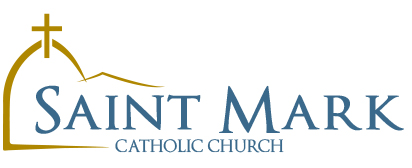About
Mission
Our mission is to teach and strengthen our Catholic faith and family through spiritual ministry, education and loving service in a Christ-like community.
We are officially registered with the International Catholic Stewardship Council, and follow the United States Bishops Pastoral on Stewardship. For information on how you can live a life of stewardship, please click here.
Our Parish has 448 families, and is a close-knit group of people who share friendship and fellowship. If you would like to join our Parish, please contact the rectory at 309-673-1263 or stmark@saint-mark.net.
St. Mark Biography
St. Mark, also known as John Mark, was one of the four Evangelists. The details of his early life are not recorded in Scripture; what we know is inferred from various sources. He is said to have been member of the priestly tribe of Levi; the Egyptian Coptics say that he was born in Northern Africa in the region of Cyrene, also the home of Simon of Cyrene, who helped Jesus carry the Cross.
His Jewish name, John, means “the kindness of God”, while his Roman name, Mark, means “the hammer”. As a young Levite, St. Mark received a thorough education and was able to read and write multiple languages, making him well suited for his task of Evangelist. His family moved to Palestine following barbarian raids in Northern Africa.
St. Mark’s family was closely associated with the Apostles. His mother was one of the “Marys” who followed Christ. The early Christians often gathered at her house and she was highly esteemed. St. Mark’s father, Aristopolos, was a cousin to the wife of St. Peter. There is also evidence that he was related to St. Thomas. St. Mark therefore grew up in a family that was closely associated with Christ.
St. Mark is also considered to be the young man who carried a pitcher signaling that his home would be used for the Last Supper (Luke 22:10-12). This same house would later be used for the coming of the Holy Spirit on Pentecost. His home was the first Christian Church. When St. Peter was freed from prison he went directly to the house of St. Mark. It is also commonly held that St. Mark tasted the wine that Jesus had transformed from water at Cana.
After Christ’s Ascension, St. Mark accompanied Peter on his missionary trips. He served St. Peter as his secretary, and accompanied Peter to Rome, where he wrote his gospel to preserve St. Peter’s preaching.
He is said later to have preached the Gospel in Venice and Aquila. To this day the Venetians hold him to be the father of their faith, and the great basilica in Venice is dedicated to him. After preaching in Italy, St. Mark traveled to Lebanon. He is thought to have reached Mt. Lebanon and served as the first Bishop of Gobayel. After serving in Lebanon, St. Mark journeyed to Alexandria, where he is considered to be the father of the Egyptian Church. He began the theology school of Alexandria, which would grow to be a center of Christian learning and culture over the next few centuries.
St. Mark was martyred in Alexandria. A rope was tied around his neck and he was dragged to death. In the year 828, merchants from Venice stole his remains from Alexandra and brought them to Venice, where they are buried in the great basilica. In 1968, Pope Paul VI gave some of the relics back to the Coptic Church in Egypt.
The Feast of St. Mark is celebrated on April 25th. St. Mark is the patron saint of notaries, attorneys, lawyers, barristers, captives, prisoners, imprisoned people, glaziers, and stained glass workers. St. Mark is the patron saint of the cities of Boretto, Creazzo, Pordenone, and Venice in Italy; Egypt, Infanta, the Philippines, the Diocese of Venice, Florida, and the Ionian Islands. The patron saint of lions, his patronage is against impenitence, insect bites, scrofulous diseases, and struma.
St. Mark is represented by the following symbols: a lion, a lion in the desert, a winged lion, a bishop on a throne decorated with lions, a man helping Venetian sailors, a man holding a book with pax tibi Marce written on it, a man holding a palm and a book, a man with a book or scroll accompanied by a winged lion, a man with a halter around his neck, a man writing or holding his gospel, or a man rescuing Christian slaves from Saracens.



